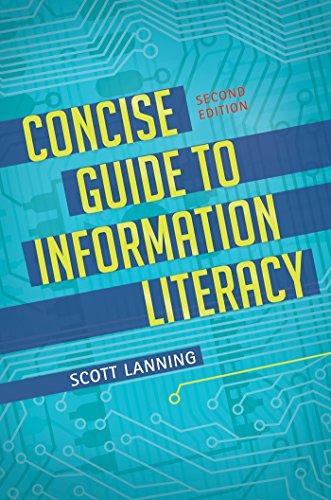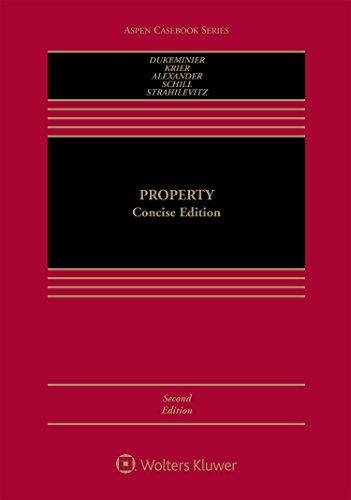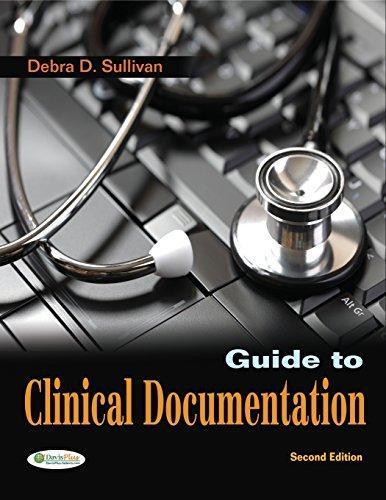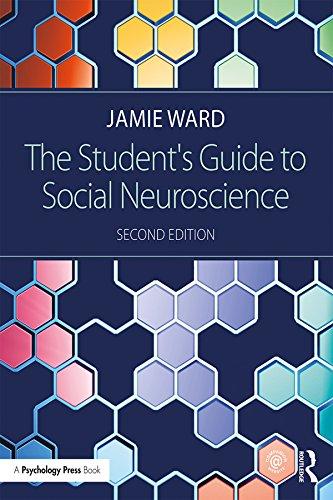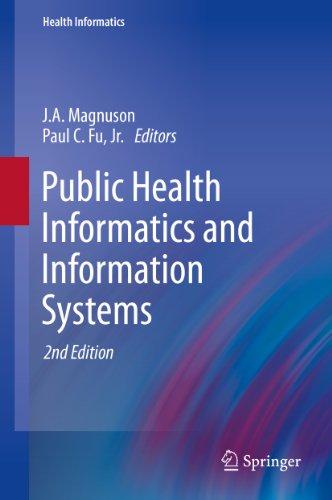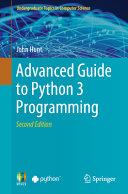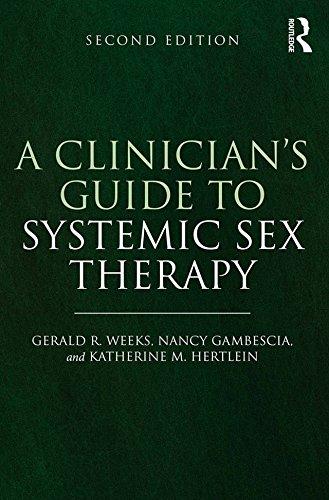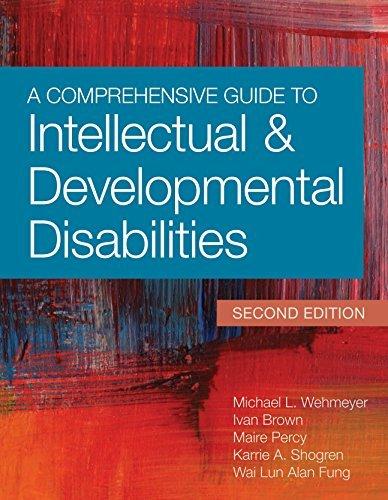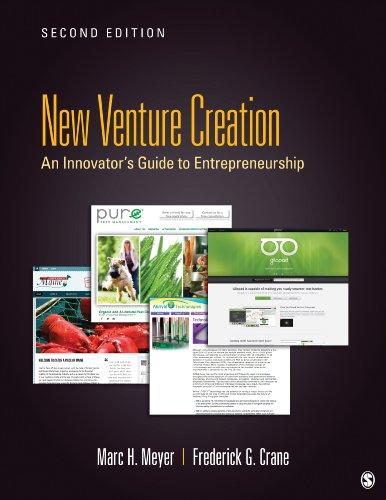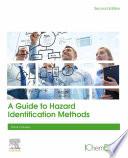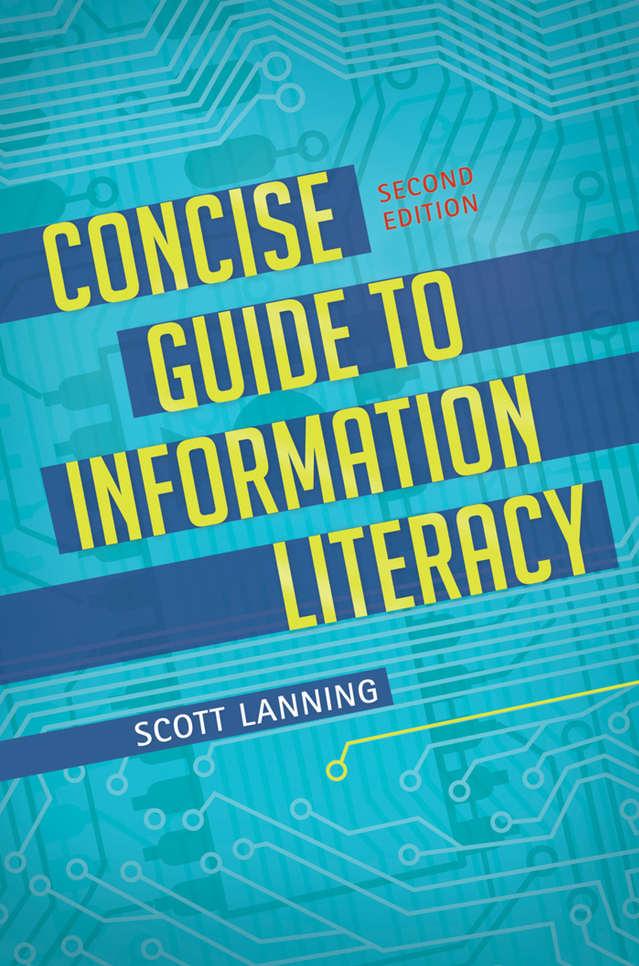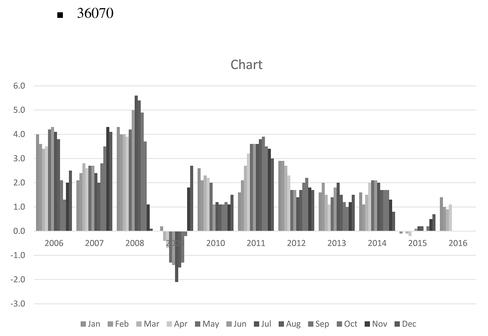Concise Guide to Information Literacy, 2nd Edition 2nd Edition, (Ebook PDF)
Visit to download the full and correct content document: https://ebookmass.com/product/concise-guide-to-information-literacy-2nd-edition-2ndedition-ebook-pdf/
More products digital (pdf, epub, mobi) instant download maybe you interests ...
Property: Concise Edition (Aspen Casebook Series) 2nd Edition, (Ebook PDF)
https://ebookmass.com/product/property-concise-edition-aspencasebook-series-2nd-edition-ebook-pdf/
Guide to Clinical Documentation 2nd Edition
https://ebookmass.com/product/guide-to-clinicaldocumentation-2nd-edition/
The Student’s Guide to Social Neuroscience 2nd Edition, (Ebook PDF)
https://ebookmass.com/product/the-students-guide-to-socialneuroscience-2nd-edition-ebook-pdf/
Public Health Informatics and Information Systems 2nd Edition, (Ebook PDF)
https://ebookmass.com/product/public-health-informatics-andinformation-systems-2nd-edition-ebook-pdf/
Advanced Guide to Python 3 Programming, 2nd 2nd Edition John Hunt
https://ebookmass.com/product/advanced-guide-topython-3-programming-2nd-2nd-edition-john-hunt/
A Clinician’s Guide to Systemic Sex Therapy 2nd Edition, (Ebook PDF)
https://ebookmass.com/product/a-clinicians-guide-to-systemic-sextherapy-2nd-edition-ebook-pdf/
A Comprehensive Guide to Intellectual and Developmental Disabilities 2nd Edition, (Ebook PDF)
https://ebookmass.com/product/a-comprehensive-guide-tointellectual-and-developmental-disabilities-2nd-edition-ebookpdf/
New Venture Creation: An Innovator’s Guide to Entrepreneurship 2nd Edition, (Ebook PDF)
https://ebookmass.com/product/new-venture-creation-an-innovatorsguide-to-entrepreneurship-2nd-edition-ebook-pdf/
A Guide to Hazard Identification Methods 2nd Edition Crawley
https://ebookmass.com/product/a-guide-to-hazard-identificationmethods-2nd-edition-crawley/
Concise Guide to Information Literacy
Obviously, a manÊs judgment cannot be beer than the information on whi he has based it.
Arthur Hays Sulzberger
Publisher of The New York Times from 1935 to 1961
Knowing a great deal is not the same as being smart; intelligence is not information alone but also judgment, the manner in whi information is collected and used.
Carl Sagan Astrophysicist and writer
Concise Guide to Information Literary
Second Edition
Scott Lanning
Copyright © 2017 ABC-CLIO, LLC
All rights reserved. No part of this publication may be reproduced, stored in a retrieval system, or transmied, in any form or by any means, electronic, meanical, photocopying, recording, or otherwise, except for the inclusion of brief quotations in a review, without prior permission in writing from the publisher.
Library of Congress Cataloging-in-Publication Data
Names: Lanning, Sco, author.
Title: Concise guide to information literacy / Sco Lanning.
Description: Second edition | Santa Barbara, California: Libraries Unlimited, an
imprint of ABC-CLIO, LLC, [2017] | Includes bibliographical references and index.
Identifiers: LCCN 2016056351 (print) | LCCN 2017006849 (ebook) |
ISBN 9781440851384 (paperba: acid-free paper) | ISBN 9781440851391 (ebook)
Subjects: LCSH: Information literacy Handbooks, manuals, etc. | Information retrieval
Handbooks, manuals, etc. | Resear Methodology Handbooks, manuals, etc. |
Report writing Handbooks, manuals, etc.
Classification: LCC ZA3075 L36 2017 (print) | LCC ZA3075 (ebook) | DDC
028.7 dc23
LC record available at hps://lccn.loc.gov/2016056351
ISBN: 978-1-4408-5138-4
EISBN: 978-1-4408-5139-1
21 20 19 18 17 1 2 3 4 5
is book is also available as an eBook.
Libraries Unlimited
An Imprint of ABC-CLIO, LLC
ABC-CLIO, LLC
130 Cremona Drive, P O Box 1911
Santa Barbara, California 93116-1911
www.abc-clio.com
is book is printed on acid-free paper
Manufactured in the United States of America
To my best friend, and biggest fan my beautiful wife.
Contents
List of Figures
CHAPTER 1: Information and Information Literacy
In is Chapter
Jargon and the Study of Disciplines
What Does It Mean to Be Literate?
What Are Some of the Literacies?
What Is Information?
What Is Information Literacy?
Why Is Information Literacy Important?
Vocabulary
estions for Reflection
Assignment
CHAPTER 2: e Information Need and Types of Information
In is Chapter
e Information Need
Formulating and Reformulating the Resear estion
Knowing Where to Look and Publishing Literacy
Formats of Information
Physical
Digital
Categories of Information
Primary vs. Secondary Information
Solarly vs. Popular Information
Current vs. Historical Information Sources
Types of Information
Baground Information Sources
Books
News Sources
Magazines
Journals
Vocabulary
estions for Reflection
Assignment
CHAPTER 3: Librarians and Library Services
In is Chapter
Library Anxiety
e Librarian
Resear Help
Interlibrary Loan
Library Instruction
Vocabulary
estions for Reflection
Assignment
CHAPTER 4: Finding Information
In is Chapter
Indexes
What Is a Database?
Free Databases
Fee Databases
Searing Databases
Basic Sear
Advanced Sear
Sear Meanics
Boolean Operators
Phrase Searing and Proximity
Nesting
Stemming
Using Help Screens
Revising the Sear
Choosing Keywords
Using Subject Searing and Field Searing
Vocabulary
estions for Reflection
Assignment
CHAPTER 5: Searing the Library Catalog and Evaluating Its Resources
In is Chapter
Searing the Library Catalog
Retrieving Materials
Evaluating Sources Found through the Library Catalog
Relevance
Purpose
Scope and Depth
Style
Validity
Timeliness
Authority
Accuracy
Utilizing Library Resources
Vocabulary
estions for Reflection
Assignment
CHAPTER 6: Searing Library Databases and Evaluating Articles
In is Chapter
Choosing a Database
Abstract and Full-Text Databases
Searing Commercial Databases
Evaluating Articles
Relevance
Purpose
Scope and Depth
Style
Validity
Timeliness
Authority
Accuracy
Utilizing Electronic Sources
Vocabulary
estions for Reflection
Assignment
CHAPTER 7: Searing the Web and Evaluating Websites
In is Chapter
Web Sear Engines
Searing the Web
Advanced Searing
Metasear Engines
Evaluating Websites
Relevance
Purpose
Scope and Depth
Style
Validity
Timeliness
Authority
Accuracy
Utilizing Web Sources
Vocabulary
estions for Reflection
Assignment
CHAPTER 8: Evaluation of Your Resear Process
In is Chapter
Why You Need to Evaluate Your Resear Process
Evaluating Your Resear Process
Resear estion
Sear Statement
Keywords
Database Selection
Vocabulary
estions for Reflection
Assignment
CHAPTER 9: Managing Information
In is Chapter
Your Role in the Resear Community
Citations
Citation Styles
Citation Help
Citation Managers
Database Citation Managers
Soware Citation Managers
Inserting Citations and Bibliographies into Resear Papers
Vocabulary
estions for Reflection
Assignment
CHAPTER 10: Ethical Use of Information
In is Chapter Using Information
oting, Paraphrasing, and Summarizing Information
Intellectual Property and Copyright
Fair Use
Plagiarism
Synthesizing Information
Vocabulary
estions for Reflection
Assignment
CHAPTER 11: Evaluating Your Product and Communicating Your Results
In is Chapter Organization
Logic
Proofreading
Communicating Your Findings
Classroom Communication
Professional Communication
e Takeaway
Vocabulary
estions for Reflection
Assignment
References
Index
List of Figures
FIGURE 1.1. Undefined Chart
FIGURE 1.2. Defined Chart
FIGURE 1.3. e Relationship between the Literacies
FIGURE 1.4. Literacy Worksheet Example
FIGURE 1.5. Literacy Worksheet
FIGURE 2.1. Pathways Information Seeking Model Part 1
FIGURE 2.2. Progression from a Factual estion to a Resear estion ..
FIGURE 2.3. e Solarly Publishing Process
FIGURE 2.4. Filtered versus Unfiltered Access
FIGURE 2.5. Time to Publication for Information Types
FIGURE 2.6. Scope and Depth of Information Types
FIGURE 2.7. Resear estion Worksheet Example
FIGURE 2.8. Resear estion Worksheet
FIGURE 3.1. estions and Information Literacy Worksheet Example
FIGURE 3.2. estions and Information Literacy Worksheet
FIGURE 4.1. Relationship between a Database, a Record, and a Field
FIGURE 4.2. Record from PubMed Database
FIGURE 4.3. Basic Sear Box
FIGURE 4.4. Advanced Sear Screen
FIGURE 4 5 Two-Line Advanced Sear
FIGURE 4.6. AND Operator
FIGURE 4.7. AND Sear with ree Keywords
FIGURE 4.8. OR Operator
FIGURE 4.9. NOT Operator
FIGURE 4.10. Complex Sear on an Advanced Sear Screen
FIGURE 4.11. Sear Worksheet with Too Narrowly Focused Sear
FIGURE 4.12. Revised Sear Worksheet to Increase Retrieval
FIGURE 4.13. Revised Sear Worksheet to Decrease Retrieval
FIGURE 4.14. Basic Sear for Fraing
FIGURE 4.15. Advanced Sear for Subject Hydraulic Fracturing
FIGURE 4.16. Complex Subject Sear on an Advanced Sear Screen
FIGURE 4.17. Complex Field Sear on an Advanced Sear Screen
FIGURE 4.18. Sear Statement Worksheet Example
FIGURE 4.19. Sear Statement Worksheet
FIGURE 5.1. Catalog Advanced Sear Screen
FIGURE 5.2. Subject Browse Sear Results for Rowling
FIGURE 5.3. Subject Browse Sear Results for Nuclear
FIGURE 5.4. Dewey Decimal and Library of Congress Call Number for The Big Picture
FIGURE 5.5. Information Context of a Book and Its Author
FIGURE 5.6. Information Context of Book, Author, and Its Publisher
FIGURE 5.7. Catalog Sear and Item Evaluation Worksheet Example
FIGURE 5.8. Catalog Sear and Item Evaluation Worksheet
FIGURE 6.1. NAICS Code Sear on Advanced Sear Screen
FIGURE 6.2. Tier Symbol Sear on Advanced Sear Screen
FIGURE 6.3. Table of Facets
FIGURE 6.4. Citation and Bibliography Problems
FIGURE 6.5. Citation and Bibliography Benefits
FIGURE 6.6. Database Sear and Item Evaluation Worksheet Example
FIGURE 6.7. Database Sear and Item Evaluation Worksheet
FIGURE 7.1. Advanced Commercial Database Sear and the Equivalent Web Sear
FIGURE 7.2. Variations on a Sear Statement and Web Sear Results
FIGURE 7.3. Advanced Sear Command in Web Sear Engine
FIGURE 7.4. Google Sear with Advanced Commands
FIGURE 7.5. Web Sear and Item Evaluation Worksheet Example
FIGURE 7.6. Web Sear and Item Evaluation Worksheet
FIGURE 8.1. Resear Process Evaluation and Effects of Changes
FIGURE 8.2. Resear estion Evaluation: Changes and Effects
FIGURE 8.3. Sear Statement Evaluation: Changes and Effects
FIGURE 8.4. Keyword Evaluation: Changes and Effects
FIGURE 8.5. Database Evaluation: Changes and Effects
FIGURE 8.6. Subject-Specific Database Evaluation Worksheet
Example…
FIGURE 8.7. Subject-Specific Database Evaluation Worksheet
FIGURE 9.1. Components of a Book Citation
FIGURE 9.2. Components of a Journal Citation
FIGURE 9.3. Book Citation in ree Formats
FIGURE 9.4. Journal Citation in ree Formats
FIGURE 9.5. Database Citation Generator
FIGURE 9.6. In-Text Citations and Bibliography with Zotero
FIGURE 9.7. Citation Worksheet Example
FIGURE 9.8. Citation Worksheet
FIGURE 10.1. oting from an Article
FIGURE 10.2. Paraphrasing from an Article
FIGURE 10.3. Summary of an Article
FIGURE 10.4. Pathways Information Seeking Model Part 2
FIGURE 10.5. otation Worksheet Example
FIGURE 10.6. otation Worksheet
FIGURE 11.1. Typical Resear Paper Outline
FIGURE 11.2. Basic Outline
FIGURE 11.3. Grammar Errors
FIGURE 11.4. Pathways Model Example
FIGURE 11.5. Pathways Information Seeking Model
FIGURE 11.6. Resear Reflection Worksheet Example
FIGURE 11.7. Resear Reflection Worksheet
Chapter 1 Information and Information Literacy
In is Chapter
You will learn:
■ What this book is about
■ What literate means
■ What information is
■ What information literacy is
■ Why information literacy is important
Jargon and the Study of Disciplines
is book is full of jargon. Jargon is the language of a discipline. In this case, the jargon in this book concerns information literacy. Every discipline has its own vocabulary, its jargon. e jargon of biology is different from that of emistry, sociology, psyology, math, and history. Understanding the language will help you understand the discipline.
is book will give you an understanding of the special language of information literacy and try to tea you some of the fundamental concepts of the discipline with the intent of giving you enough skills to participate successfully in the information world, and enjoy all the benefits that being information literate entails in the world at large and as your information skills continue to grow.
What Does It Mean to Be Literate?
We all have a basic understanding of what it means to be literate. When we say someone is literate, we usually mean that that person can read and write If someone is illiterate, he or she is laing in one or both of those skills. is is indeed one of the meanings of literate. However, there is a mu broader and older definition of literate. According to the Oxford English Dictionary, a literate person is an educated person ("Literate" 2016). is meaning of literate dates to about A.D. 1475. So what does it mean to be educated? In A.D. 1475, it meant being able to read and write. What does it mean to be educated, today? We have more information, more tenology, and more ways to communicate it than anyone from the Middle Ages could have dreamed. We need to know more than just how to read and write to be literate
What Are Some of the Literacies?
We need a wide range of discipline-specific literacies to be educated. We need:
Visual literacy
Digital literacy
Financial literacy
Geographic literacy
Cultural literacy
Media literacy
Scientific literacy
Digital life literacy
Health literacy
Computer literacy
Historical literacy
STEM literacy
Data literacy
Metaliteracy
Civic literacy
Economic literacy
Multicultural literacy
Global literacy
Critical literacy
Information literacy
Don't be intimidated by this partial list of literacies. You don't need to be an economist to be economically literate. You need to know enough about economics to understand the impact local, national, and world economic issues have on you and others.
You need to understand that some of these literacies overlap ea other For example, being economically literate will help you with your global literacy. However, the concept of global literacy encompasses mu more than just economics, including civics, sociology, labor, and the environment among other topics.
e focus of this book is information literacy, and it includes aspects of data, digital, civic, media, visual, and other literacies. We will get to all of these in one form or another in this book, but right now, we need to start with the basics.
What Is Information?
We looked at literacy. Now we will examine information. Information is defined as:
Data whi has been recorded, classified, organized, related, or interpreted within a framework so that meaning emerges ("Information" 2003)
Information can take many forms. It can be words on a page, arts, tables, graphs (Figure 1.1), pictures, audio, and video. Is the following information?
Figure 1.1: Undefined Chart
No. Neither of these is information. ey are data. ey need some kind of context for their meaning to be discerned. In the first case, we have a number and no idea what it means beyond its numerical value. We can rewrite the number as 36,070 . Now we know it is a measure of something. If we place this measurement in the Pacific Ocean, then you would be right in saying this is the depth of the Mariana Tren ("Mariana Tren" 2016).
In the case of the art, if we add more information to it to give it a context from whi it can be understood, it would look like this (Figure 1 2)
Now our art makes more sense. It is the rate of inflation in the United States for the past 10+ years by month ("Bureau of Labor Statistics Data" 2016). Now both of these are examples of information.
Not only are there many forms that information can take, but there are also many sources of information. Information can come from traditional sources like news outlets, whi may be a television broadcast, a Website, or a magazine. Information can be discovered, and uncovered. e scientists at CERN who discover new subatomic particles, and pass that information on to us, have created new information. e researer who finds a medicinal use for a plant from the South American rain forests,
